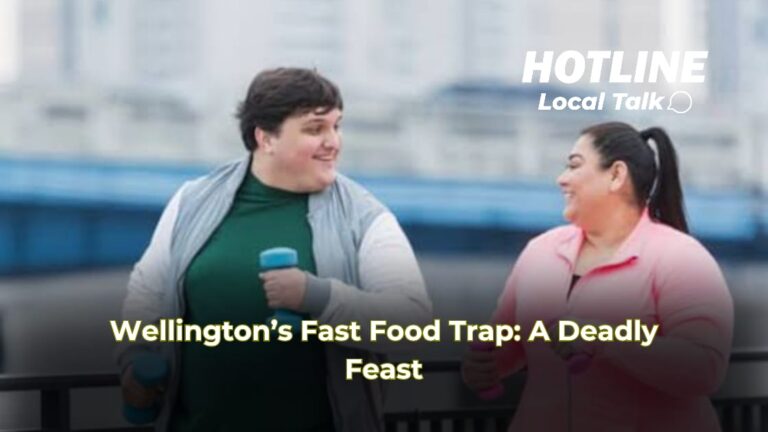Wellington, New Zealand’s vibrant capital, grapples with a dire obesity epidemic. Only two countries have heavier populations globally. Fast food is killing us, driving this crisis with relentless force. New Zealand boasts 3,500 fast food outlets—one for every 1,385 people. In Wellington, home to 216,200 residents, around 200 outlets saturate the city, especially in low socio-economic areas, preying on vulnerable communities. Consequently, obesity, diabetes, and cardiovascular disease surge, draining healthcare funds. Yet, imagine the lives saved and costs cut if Wellington weren’t so fat.
Firstly, Wellington’s fast food density is staggering. Burgers, chips, and sugary drinks dominate menus, luring residents with low prices and speed. In poorer suburbs, healthy options are scarce. Families, tight on money, often choose calorie-heavy meals. As a result, obesity rates soar. One in three adults is obese, with Māori and Pacific communities hit hardest. Children fare no better; one in nine is obese, and deprived areas face triple the risk. Thus, fast food’s grip shapes unhealthy habits across the city.
Moreover, the health toll is devastating. Obesity fuels type 2 diabetes, with cases spiking among young adults. Cardiovascular disease, another grim outcome, claims lives daily. Heart attacks and strokes, once rare in youth, now strike earlier. Wellington’s hospitals, overwhelmed, battle these preventable diseases. Healthcare costs balloon, diverting funds from other needs. However, the human cost outweighs the financial. Families lose loved ones too soon, and communities suffer.
So, what if Wellington fought back? Reducing fast food outlets could shift the tide. Zoning laws might block new openings in poorer areas. Subsidies for fresh produce could make healthy eating affordable. Schools could teach nutrition, empowering kids to choose wisely. Consequently, obesity rates might drop, easing diabetes and heart disease burdens. Health savings could fund better care or infrastructure. Across New Zealand, with its 3,500 outlets, similar steps could save billions, amplifying the impact.
Yet, change won’t come easily. Fast food giants wield influence, and convenience is addictive. Still, hope emerges. Community groups rally for healthier options, and some eateries now offer lighter fare. Transitioning to a healthier city demands bold action. Policymakers must prioritise wellbeing over profits. Residents can drive change by demanding better food choices.
In conclusion, Wellington stands at a crossroads. Fast food is killing us, but solutions exist. By curbing its 200 outlets, promoting nutrition, and empowering communities, the city could slim down. Obesity, diabetes, and heart disease would wane, and healthcare costs would ease. New Zealand could follow suit, tackling its 3,500 outlets. Ultimately, a leaner Wellington promises a brighter, healthier future. Will the city seize this chance to escape its deadly feast?
TRUTH SEEKER
Instantly run a Quiz with friends... about the article. Interact more & analise the story. Dig in, catch out biased opinions, and "fact check" with TRUTH SEEKER by ONENETWORK WELLINGTONLIVE 👋
Do you agree with the main argument of this article?
Total votes: 12
How many fast food outlets are there in Wellington for every 1,385 people?
Bias Analysis
Fact Check Summary
True, as mentioned in the article.
Source: Article
True, as stated in the article.
Source: Article










